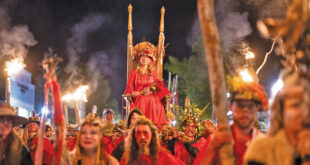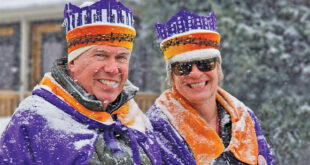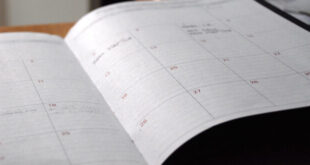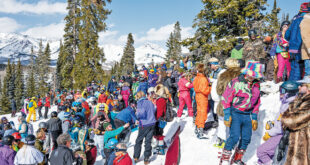“As I wandered the forest, the green leaves among, I heard a Wild Flower singing a song. I slept in the earth, in the silent night, I murmured my fears and I felt delight’…”
— William Blake
In its slow retreat, the snows of winter have left for higher ground. Reluctant to give up its foothold to summer, snow lingers in the high country, still deep in crevices, mountaintops, fields and in the dark shade under tzall trees.
In winter’s wake bursts an artist’s palette of spellbinding purples, brilliant reds and oranges, pristine whites, delicate blues, mysterious indigos, splashed across slopes, fields, and valleys. Tiny petals to towering spikes of the century plant, gauzy seed heads, alpine sunflowers backlit by the sun in the late afternoon as the long shadows of mountain peaks finger their way through golden masses.
To hike through a Crested Butte sunny summer day, puffs of clouds sailing through blue skies, is to stroll in heaven. To arrive at the height of wildflower season is unforgettable, with so many species and colors. No wonder we are the designated Wildflower Capital of Colorado.
Sue Wallace, executive director of the Wildflower Festival, now in its 28th year, says the festival has expanded its boundaries of dates, activities and events. Wallace scurries between participants, answering questions and offering suggestions about where to go and which classes to sign up for at the bustling temporary headquarters for the week at Crested Butte Community School (CBCS).
This year, the festival runs through July 13 but the events actually continue through August 16.
Wallace explains, “We want to grow the season, because flowers are blooming through August. We’re the Wildflower Festival so we want people to come learn about wildflowers and that can take place in more than a week’s time. We have a full season now instead of only one week. People who either can’t come the week of the festival or just don’t want to be here when it’s that busy, or people who want a more intimate experience or like smaller groups, can arrive later.”
Participants who show up to gawk, paint, photograph and take part in the many events range from locals to Front Rangers and travel from as far away as Atlanta, Texas, Oklahoma, Arizona, and Louisiana and beyond. Some of them get the double bonus of escaping their area’s sweltering heat. “What’s fun is that some people have been coming for years and now their kids are coming,” says Wallace.
The events attract a good mix of ages, from young, earth-oriented 20-somethings to durable seniors. With 1,300 people already registered, the festival will see more rolling in as walk-ins and late arrivals. Wallace notes that the event is steadily growing every year.
The Wildflower Festival started as a small seed back in 1987 when three local ladies, Rosie Catmur, Michelle Simpson and Dana Bradley, decided to hold a weekend of workshops on wildflower hikes. From there it was carried to the state legislature to designate Crested Butte as the state’s Wildflower Capital in 1990. The mission of today’s Wildflower Festival is conservation, education and economic development.
The blooms in the high country are about a week or two late this year because of the heavy snowfall this winter, much of which hasn’t melted higher up, and Wallace says that it’s been a cool spring.
“It didn’t warm up enough for things to get excited about coming up out of the ground,” she says, but notes that in town and on close-in trails that are a 15-minute or less drive, the flowers are a profusion of lupine, larkspur, mule’s ear sunflowers, aspen sunflowers, scarlet gilia, paintbrush, buckwheat, shooting stars, wild rose and more.
Some of the closer hikes to see these flowers are the Lower Loop, Woods Walk, Budd Trail, Brush Creek, Walrod, Cave’s Trail, Snodgrass, and Lupine Trail.
Higher up at 11,000 feet, the glacier lilies are still blooming along with the spring beauties, iris, and the elusive fairy slippers. You can find these in places like, Irwin, Gothic, Elkton, Painter Boy mine by trail 403, and Washington Gulch. You can also take the lift at CBMR on the mountain and see pikas and marmots and even more wildflowers.
Maps are available at the Wildflower Fest’s headquarters at Crested Butte Community School.
Some of the new events this year include a fun Botanical Indulgence class, which includes a visit to Montanya’s Rum Distillers, Third Bowl Ice Cream and the Dogwood Cocktail Cabin to discover all the ways that plants and flowers have been used to make special flavorings. The class will cover using flower essences and ingredients in food and drink, this Friday and Saturday, July 11-12, from 2 to 5:30 p.m. Eva Montane is leading this class.
Molly Murfee, executive director of 1% for Open Space, a grant source organization, is leading hikes on the parcel that the organization helped fund as permanent open space. These lands not only have ecosystem value and provide wildlife support, they’re preserved land with a recreational aspect to them, such as the new Lupine Trail for mountain biking and hiking. And they’re bursting with blooms right now.
The hike from Crested Butte to Aspen is an epically gorgeous 11-hour hike way up into the wilderness areas of East and West Maroon passes. Participants must be conditioned, experienced hikers who will be picked up on the other side and brought back to Crested Butte. Starting at 6 a.m. and arriving back in Crested Butte around 8 p.m. makes for a long day for the lucky nine hikers who sign up for the event that Ben Pritchett of Colorado Backcountry is leading.
New art classes include Garland Middleton teaching Asian Sumi-e, a beautiful, simple black stroke painting technique with the flowers done in color. Also, there’s a cyanotype class, an old technique of treating fabric or paper with a chemical, which then develops in the sun. Peggy Hartzell will lead the class to create prayer flags and paper art in shades of blue, and using plants picked out of Peggy’s garden so no wildflowers will be harmed by the process.
Dr. David Inouye is a University of Maryland professor of conservation biology who has studied wildflowers at the Rocky Mountain Biological Lab (RMBL) in the Gothic area for 40 years. His research is one of the longest, continuous running sets of phenological observations in North America. Inouye reports that the wildflower species he’s studied suffer frost damage from warmer temperatures because the plants are getting signals to bud and leaf out too early. If the buds freeze and there are no blooms or fewer blooms, the seed dispersion is less and the spectacular display of flowers is certainly not as profuse. And the chain reaction is wide as it affects animals and insects that rely on certain species of wildflowers.
“Inouye’s research shows that adaptation [to climate change] is favoring sagebrush as opposed to wildflowers,” says Wallace. “Some predict that this area could look more sage than flowers in the future.”
But she also points out that the Wildflower Festival has been going strong for the past 28 years despite the valid concerns. “When we first started, people were worried about drought, fire, late snow melt and all the natural cycles that occur in the high country and how it would affect the festival. It’s still blooming 28 years later.”
But that’s not to downplay the effect climate change has had on wildflowers and the environment. “RMBL is such a gift,” says Wallace, “because they have some of the longest data sets in the world for high altitude studies and in the past 35 years they’ve seen changes that affect when the flowers come out.
“We need to be impressed with what’s happening,” she adds. “Everything from utility lines to construction disturbs the ground, and that never recovers, so invasive plant species take over. Weeds will out-compete wildflowers every time. Although I’m not in favor of applying herbicides—if the long-term benefit to wildflowers is positive, we need to consider it in a responsible way. We need to take a more holistic approach for their survival. That’s what’s so cool about flowers…it crosses over into geology, ecology, botany, pollination, birds, bees, bats. There’s so much to learn.”
Because of the wet year, the wildflowers are abundant and beginning their amazing performance as they climb up from the lower elevations to the high country. Pick up a copy of local author Kathy Darrow’s book, Wild About Wildflowers: Extreme Botanizing in Crested Butte, grab yourself a map, pack your rain gear and lunch, plenty of water and sunscreen—and don’t forget the mosquito spray—and set out solo or with a friend to discover the wildflowers.
Better yet, share the experience and gain a deeper knowledge from the insight of one of the Wildflower Festival tours and their instructors and guides. Although the festival is in full swing this week, there are events through August 16. In this impossibly beautiful landscape you can’t go wrong on any path you choose to take here in Crested Butte.
For a full listing of Wildflower Festival schedules and events online: crestedbuttewildflowerfestival.com. Or for more info and registration go to the Crested Butte Community School. For Rocky Mountain Biological Labs events: rmbl.org.
 The Crested Butte News Serving the Gunnison Valley since 1999
The Crested Butte News Serving the Gunnison Valley since 1999




